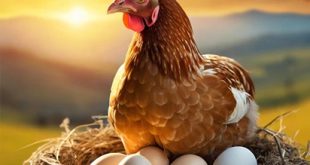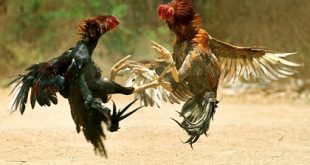The Udder of a Cow: A Detailed Exploration
The cow, one of the most integral animals in agriculture, provides humans with milk, meat, and leather. Among its many body parts, the udder stands out as a vital organ due to its role in milk production. This article delves into the anatomy, function, and importance of the cow’s udder, shedding light on how this fascinating organ contributes to the dairy industry and the cow’s overall physiology.
A Body Part of A Cow

Anatomy of the Udder
The udder is a large, glandular organ located beneath the cow’s abdomen, suspended between the hind legs. Structurally, it is divided into four distinct quarters, each with its own milk-secreting system. This division ensures that any infection in one quarter does not spread to the others, protecting the udder’s overall functionality. Each quarter contains:
- Alveoli: Tiny, grape-like structures where milk is synthesized. These are lined with specialized epithelial cells that extract nutrients from the cow’s bloodstream to produce milk.
- Duct System: A network of channels that transport milk from the alveoli to the teat cistern.
- Teat Cistern and Teat Canal: The teat cistern acts as a storage reservoir, while the teat canal serves as the final passage through which milk is expelled.
The udder is supported by a strong ligament system, primarily the median suspensory ligament and the lateral suspensory ligament. These ligaments help bear the significant weight of the udder, which can exceed 50 kilograms when full of milk.
Physiology of Milk Production
Milk production in the udder is a complex process regulated by hormones, primarily prolactin and oxytocin. Here’s an overview of how milk is produced and released:
- Nutrient Absorption: Blood carries nutrients such as water, proteins, fats, and carbohydrates to the alveoli. Approximately 400 liters of blood must flow through the udder to produce one liter of milk.
- Milk Synthesis: The epithelial cells in the alveoli absorb these nutrients and synthesize them into milk components. Casein, lactose, and butterfat are the primary constituents of milk.
- Milk Letdown: When a cow is stimulated—either by the suckling of a calf or by a milker—the brain releases oxytocin. This hormone causes the smooth muscles around the alveoli to contract, pushing milk into the duct system and eventually through the teats.
Importance of the Udder in Dairy Farming
The udder’s health and functionality are crucial for dairy farming. High milk yield depends on the udder’s capacity to produce and store milk. Factors that affect the udder’s efficiency include genetics, nutrition, and proper management practices. Here are some key considerations:
- Udder Health: Diseases such as mastitis, an inflammation of the udder tissue, can severely impact milk production. Mastitis is often caused by bacterial infections and requires prompt treatment with antibiotics or other interventions.
- Udder Hygiene: Cleanliness is paramount to prevent infections. Farmers ensure the udder is washed and sanitized before milking to maintain milk quality and protect the cow’s health.
- Milking Techniques: Proper milking practices, whether manual or mechanical, are essential to ensure complete milk extraction and avoid damage to the udder.
Factors Influencing Udder Development
The size, shape, and efficiency of a cow’s udder can vary based on several factors:
- Breed: Different breeds of cows are bred for varying purposes. For instance, Holsteins are renowned for their high milk yield, while Jerseys are known for milk rich in butterfat. These differences are often reflected in the udder’s capacity and structure.
- Age: Younger cows, or heifers, have smaller udders that grow and develop with successive lactation cycles. Older cows typically have larger, more developed udders due to their extended lactation history.
- Nutrition: A balanced diet rich in proteins, vitamins, and minerals supports healthy udder development and enhances milk production.
Challenges in Udder Management
While the udder is a marvel of biological engineering, it is also susceptible to various challenges that require careful management:
- Mastitis: This condition is the most common udder-related issue in dairy cows. Symptoms include swelling, heat, pain, and abnormal milk secretion. Mastitis can be prevented through regular milking, proper hygiene, and timely veterinary care.
- Teat Injuries: Cuts or abrasions on the teats can lead to infections and discomfort, reducing the cow’s willingness to be milked.
- Overmilking: Excessive or improper milking can strain the udder and cause long-term damage. Automated milking machines with sensors help mitigate this risk by ensuring that milking stops once the udder is empty.
Innovations in Udder Care
Modern technology has revolutionized the management of cow udders in the dairy industry. Some notable advancements include:
- Automated Milking Systems: These systems reduce the labor involved in milking while ensuring gentle and efficient milk extraction.
- Udder Health Monitoring Devices: Wearable sensors can track udder temperature, milk flow, and other parameters to detect early signs of mastitis or other issues.
- Improved Vaccines and Treatments: Advances in veterinary medicine have led to more effective vaccines and therapies to prevent and treat udder-related diseases.
Cultural and Economic Significance
The udder holds immense cultural and economic importance. In many cultures, the cow is revered as a sacred animal, and its milk is considered a symbol of purity and nourishment. Economically, the udder’s productivity directly impacts the profitability of dairy farms. High-yielding udders are a cornerstone of the dairy industry, providing milk for a wide range of products, from cheese and butter to yogurt and ice cream.
Conclusion
The cow’s udder is more than just an organ; it is a cornerstone of human sustenance and agricultural prosperity. Understanding its anatomy, physiology, and care is essential for maximizing milk production and ensuring the well-being of dairy cows. As technology continues to advance, the future of udder management promises even greater efficiency and sustainability, cementing the cow’s role as a vital contributor to human life.


